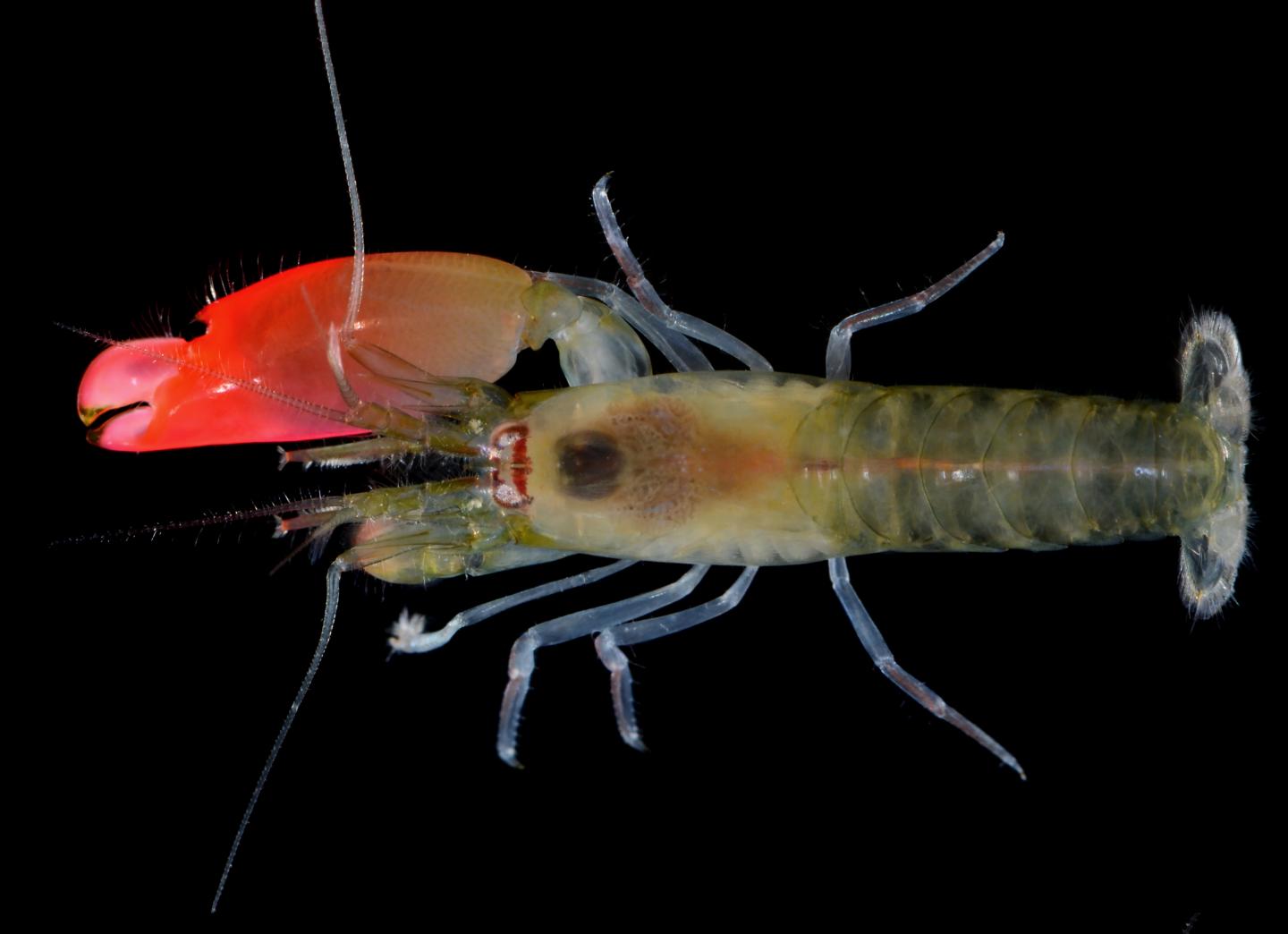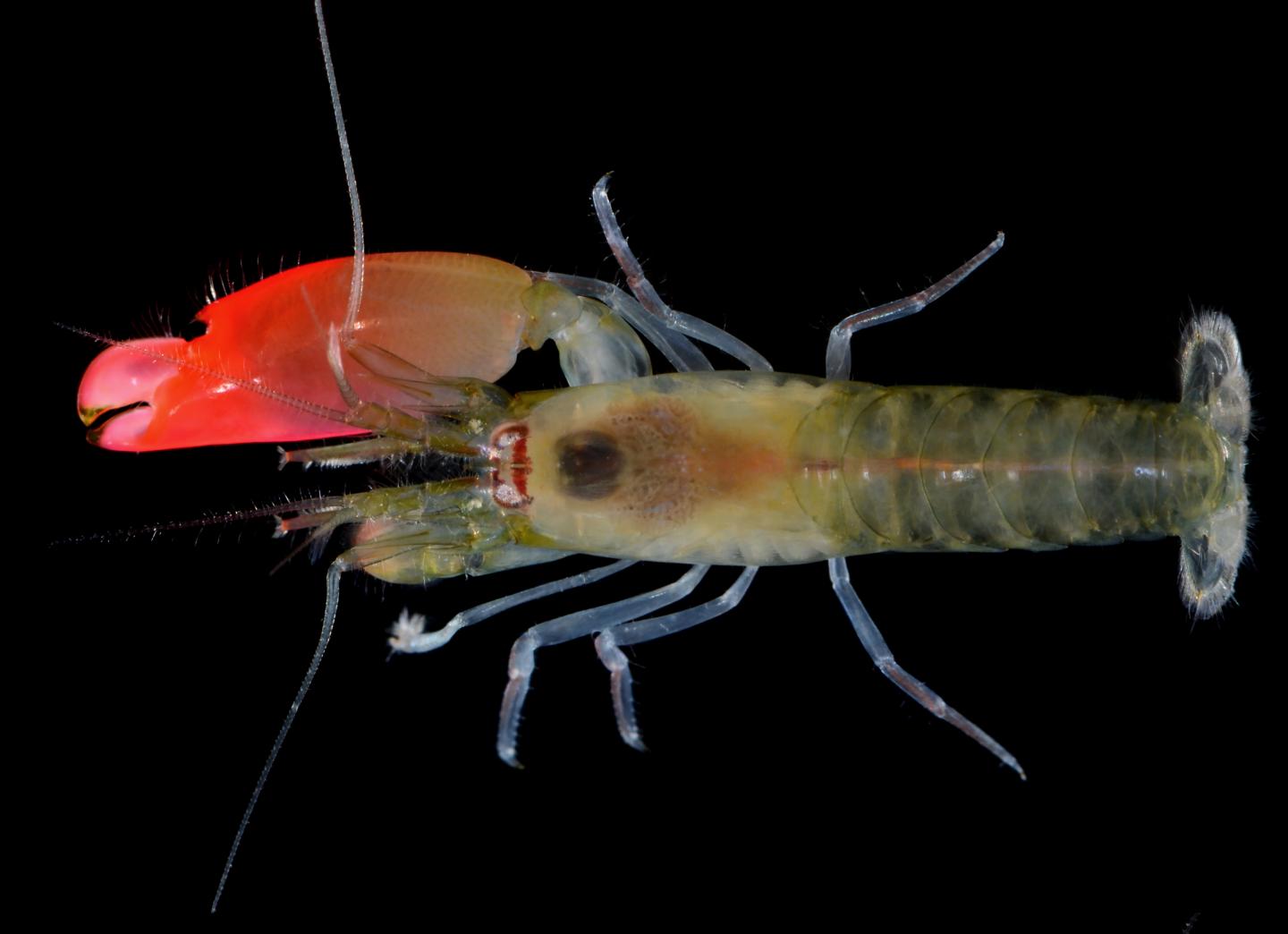
Credit: Sammy De Grave
A strikingly bright pink-clawed species of pistol shrimp, discovered on the Pacific coast of Panama, has been given the ultimate rock and roll name in recognition of the discoverers' favourite rock band – Pink Floyd.
The conspicuously coloured pistol shrimp has been named as Synalpheus pinkfloydi in the scientific description of the species, published in Zootaxa journal today (12 April).
Just like all good rock bands, pistol shrimps, or snapping shrimps, have an ability to generate substantial amounts of sonic energy. By closing its enlarged claw at rapid speed the shrimp creates a high-pressure cavitation bubble, the implosion of which results in one of the loudest sounds in the ocean – strong enough to stun or even kill a small fish.
Combined with its distinct, almost glowing-pink snapping claw, Synalpheus pinkfloydi is aptly named by the report's authors, Arthur Anker of the Universidade Federal de Goiás in Brazil, Kristin Hultgren of Seattle University in the USA, and Sammy De Grave, of Oxford University Museum of Natural History.
De Grave has been a life-long Pink Floyd fan and has been waiting for the opportunity to name the right new species after the band.
"I have been listening to Floyd since The Wall was released in 1979, when I was 14 years old. I've seen them play live several times since, including the Hyde Park reunion gig for Live8 in 2005. The description of this new species of pistol shrimp was the perfect opportunity to finally give a nod to my favourite band," he says.
Arthur Anker, the report's lead author, says: "I often play Pink Floyd as background music while I'm working, but now the band and my work have been happily combined in the scientific literature."
Synalpheus pinkfloydi is not the only pistol shrimp with such a lurid claw. It's closely-related and similar-looking sister species, Synalpheus antillensis, scientifically described in 1909, is found in the western Atlantic, including the Caribbean side of Panama. But the authors of the new paper found that the two species show considerable genetic divergence, granting S. pinkfloydi a new species status and its very own rock and roll name.
Animals feature frequently in the Floyd back-catalogue. Indeed, the 1977 album Animals includes tracks titled Dogs, Sheep, and a suite of music dedicated to pigs. Then there's Several Species of Small Furry Animals Gathered Together in a Cave and Grooving with a Pict from 1969's Ummagumma. In fact, other biologists have already named a damselfly after that album: Umma gumma, in the family Calopterygidae. However, until today there have been no crustacean names known to honour the band.
###
For further information and images:
Scott Billings Digital enagament officer
Museum of Natual History [email protected]
01865 282 537
Notes to editors
About the Museum of Natural History
Founded in 1860 as the centre for scientific study at the University of Oxford, the Museum of Natural History now holds the University's internationally significant collections of entomological, geological and zoological specimens. Housed in a stunning Pre-Raphaelite-inspired example of neo-Gothic architecture, the Museum's growing collections underpin a broad programme of natural environment research, teaching and public engagement.
In 2015, the Museum was a Finalist in the Art Fund Prize for Museum of the Year. In 2016, it won the top accolade, Best of the Best, in the Museums + Heritage Awards. http://www.oum.ox.ac.uk http://www.morethanadodo.com
Media Contact
Lanisha Butterfield
[email protected]
01-865-280-531
@UniofOxford
http://www.ox.ac.uk/
############
Story Source: Materials provided by Scienmag





